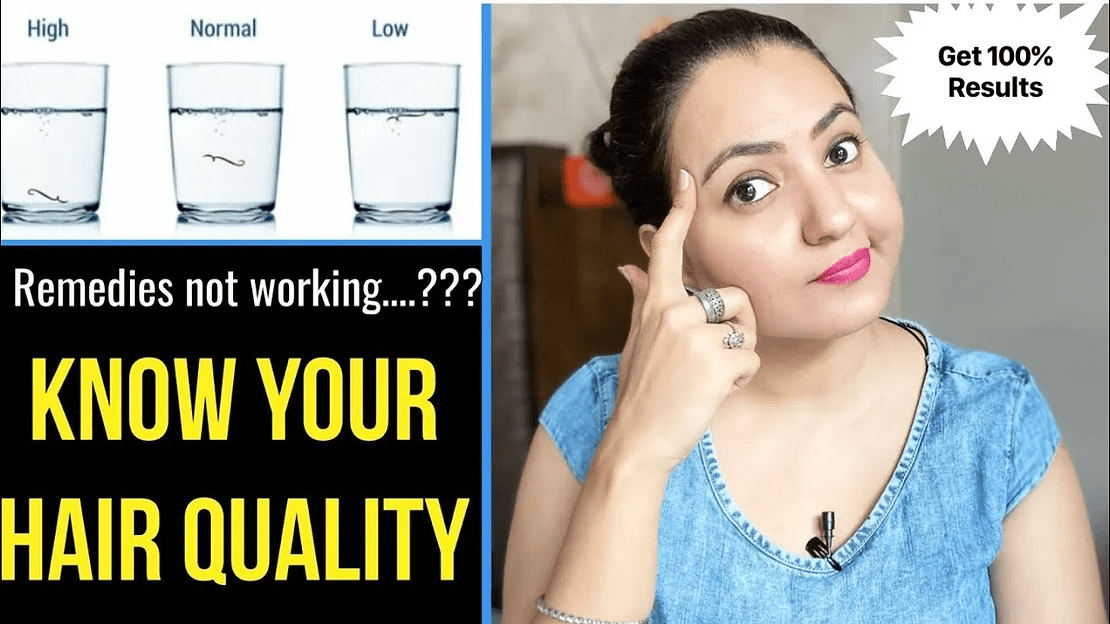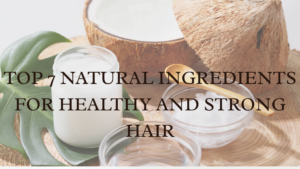Does it ever happen to you that a remedy or some DIY that works so well for others does not work for you? Do you ever wonder why a DIY hair oil works for a particular person but not for you?
Now one more question – do you know your hair type?
Yes, I am asking about the quality of your hair. Many people are unaware that hair has a particular type and texture. Whenever we look for a remedy, a DIY product, or any hair product for that matter, we should consider the quality and category of our hair.
Knowing what sort of hair you have will help you understand the kind of remedy you need for your hair.
Let me clarify one thing, natural remedies are for every hair type. What differs here is the quantity and the period of the remedy.
It is exactly like how you understand your skin type. You know your skin type, so you use the products and do the remedies that are best suited for your skin.
But how can we know about the quality of our hair?
Do not worry, as I have the answer! The key to understanding the quality of hair is understanding the porosity.
Table of Contents:
Porosity Of Hair:
Hair porosity is a measure of how well your hair can take in and retain moisture. Another way to think of it is as an indicator of how quickly moisture may enter the hair.
- This is your hair’s tough, outermost layer of protection, which is composed of tiny pores that overlay one another.
- Your hair’s thickest layer is here.
-
It contains the pigment that gives your hair its colour and fibrous proteins.
- The soft, middle section of the hair shaft is this.
-
The medulla is the soul of your hair. Your hair is as alive as its medulla.
-
There are two ways of energizing the medulla. Firstly by eating healthy food, you can nourish your hair internally.
-
Next, by providing topical care, you can energize the medulla externally.
What Are The Types Of Porosity?
There are three types of porosities:
How To Know Your Hair Porosity?
If you want to identify your hair porosity at a glance, you can check the smoothness of your hair.
- If the strand floats at the top, you have low porosity.
-
If the strand floats somewhere in the middle, you have medium porosity.
-
If the strand sinks, you have high porosity.
Factors Affecting Hair Porosity:
All the factors here affect the porosity for the worse.
- Exposing hair to dirt and pollution can affect your hair’s porosity.
-
So even if it looks super cool to leave your hair open while riding on a motorbike, avoid doing it.
- We know that UV rays from the sun are damaging to the skin.
-
But these rays are also damaging to your hair.
- Getting chemical treatments excessively can alter your hair porosity leading to severe damage.
- Not providing the regulated amount of protein to hair can increase hair porosity leading to rough and dry hair.
What Can Be Done?
1]. For Low Porosity:
- If you have low-porosity hair, use clarifying shampoos. Clarifying shampoos are powerful cleansers, but they are chemical-based and can lead to some or the other deposition if not rinsed thoroughly.
-
So you can use castile soap. It is on the expensive side but works like magic.
-
Next, you can use apple cider vinegar to rinse your hair. Apple cider vinegar rinse can remove the toughest deposition.
-
You can get hot oil massages so that the treatment can penetrate the cuticles and reach the medulla.
-
Avoid protein treatments and do not consume too much protein.
-
Protein leaves its layer on the hair, which is not good for hair with low porosity. You can use protein masks once a month.
- If you have medium porosity hair, CONGRATULATIONS!!! You can do anything you like.
-
You can oil your hair, apply hair marks, and do all the remedies, but in a controlled.
-
Medium porosity is like the sweet spot. It is a perfect blend of hair.
-
But make sure that you do not overdo or underdo anything to deteriorate it.
- Protein mask application is the magic for your hair if you have high-porosity hair. So eat protein and apply protein.
-
You can put leave-in conditioners on your hair. More gaps in the cuticles can lead to more damage.
-
So a leave-in conditioner will fill those gaps and protect the hair. Use natural pre-conditioners for your hair before every wash.
-
Keeping your hair conditioned at all times will keep them protected. Another way to protect the hair is to keep your hair tied and covered.
-
Cover your hair every time you go out in the sun to protect them from further damage.
Conclusion:
I hope I helped you to understand your hair a little better. You can try any hair remedy you like. Just be cautious about protein remedies (especially for people with low porosity hair).



